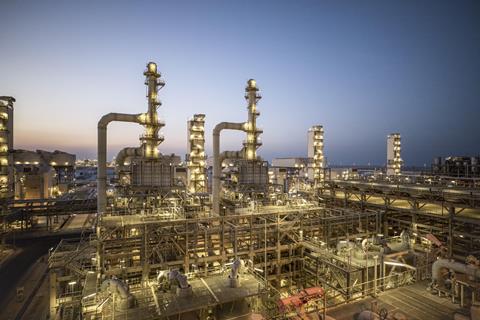Careful pretreatment of your iron catalyst enables the highly efficient production of chemical building blocks in a Fischer-Tropsch reactor, an Eindhoven-Beijing team reports in Nature (after a 5-year reviewing period).
‛Converting gasified heterogeneous waste streams via the Fischer-Tropsch process could become important for the circular economy,’ predicts Emiel Hensen, professor of inorganic chemistry at Eindhoven University of Technology. ‘And then it is an advantage if you have processes in place to efficiently turn those streams into chemicals as well as fuels.’
For almost a century, Fischer-Tropsch (FT) has been mainly associated with the production of fuels. FT converts syngas, consisting of CO and H2, into a mixture of hydrocarbon chains. Iron or cobalt particles serve as catalysts. The process was once invented to make synthetic petrol from coal, but it also works with natural gas (gas to liquids or GTL) and any other carbon source that is abundantly available.
On the product side, it is more difficult to control. Hensen concentrates on the production of linear α-olefins, chains of five to ten carbon atoms with one double bond at the end. These are shorter than the average chain lengths in petrol, and can be used as chemical building blocks for polyethylene, for instance. Until now, this was far from efficient as unintentionally, half of the CO was converted into CO2. And attempts to lower that so-called CO2-selectivity by enriching the catalyst with Na, S or other elements as promoters, turned out to mainly result in deactivation.
The right carbide
Together with the National Institute for Clean-and-low-carbon Energy (NICE) in Beijing, Hensen’s group has now managed to figure out how to limit that unwanted CO2 formation. The secret is in the preparation of the catalyst nanoparticles. It was already known that iron, unlike cobalt, immediately reacts with CO under FT conditions. Thus, you get a mixture of iron oxides and iron carbides on the surface.
[Article continues below]

‛Earlier, we showed in Science Advances that a catalyst with a layer of so-called ε-phase carbide, but without oxides, produces much less CO2 than traditional iron catalysts,’ says Hensen. ‘But that ε-phase is not stable in the broader temperature range, around 300 °C, which we are interested in for the synthesis of chemicals.’
In a recent Nature publication, Hensen’s group and NICE now reveal the recipe to grow another iron carbide phase, designated χ-Fe5C2, which delivers a strongly improved performance. ‛The activity is 10 to 50 times higher than in previous α-olefin processes, and the CO2 selectivity is down to 9%,’ Hensen says proudly. He adds that the Chinese interest is no coincidence. ‛It is a coal country. They already have the second-largest FT plant in the world, after the one Shell operates in Qatar.’
Reviewer
Hensen reveals that two or three follow-up publications, that report even lower carbon-selectivities, are already waiting to be submitted. However, these had to be delayed untill Nature published the current work; a track that took almost five years. ‛It is well known that Nature is slow. In this case, a discussion arose with a reviewer who was very difficult to convince. We briefly considered withdrawing the paper and offering it elsewhere, but when you are already thát far along…’
Peng Wang, et al., Efficient conversion of syngas to linear α-olefins by phase-pure χ-Fe5C2, Nature (2024), doi:10.1038/s41586-024-08078-5
Peng Wang, Wei Chen, et al., Synthesis of stable and low-CO2 selective ε-iron carbide Fischer-Tropsch catalysts, Science Advances (2018), doi:10.1126/sciadv.aau2947













Nog geen opmerkingen